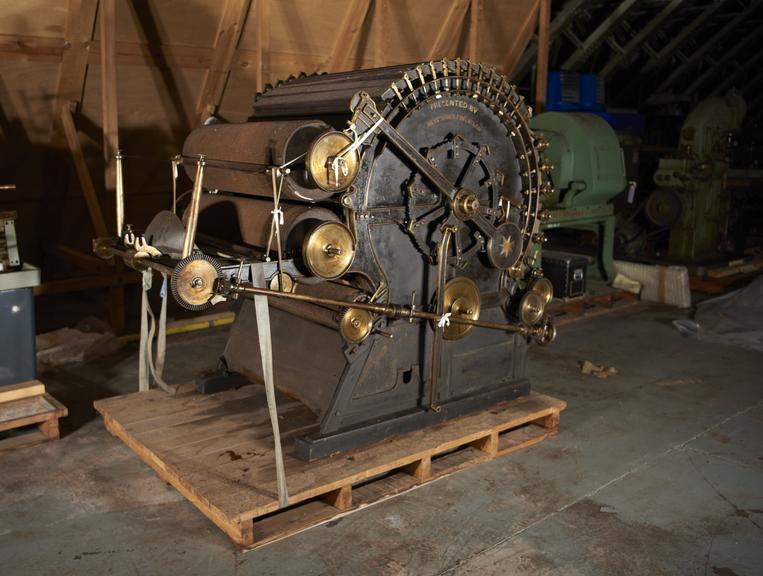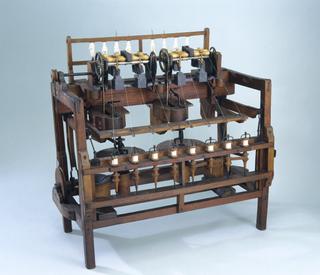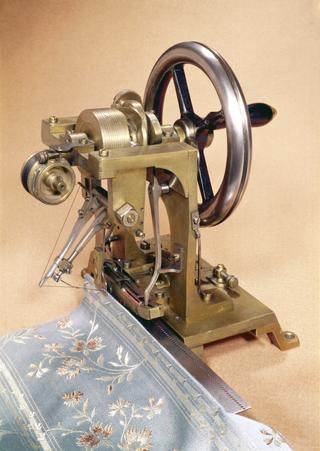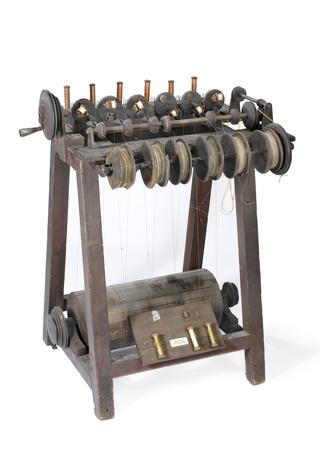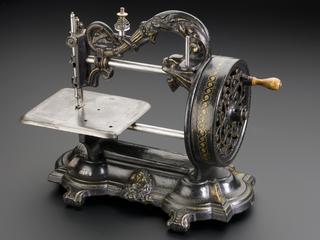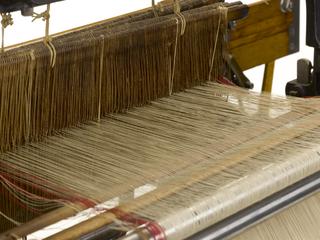Self Stripping Carding Engine by Archibald Buchanan
Original self stripping carding engine, invented and made by Archibald Buchanan, Catrine, Ayrshire, Scotland, Patent no. 4875, 1823.
More
This carding engine, intended to clean cotton fibres before they were spun into thread, with the first successful form of automatic stripping or cleaning arrangement, was patented by Archibald Buchanan in 1823, and made by him probably at a somewhat later date, as some of the parts are arranged in a slightly different way to that described in his specification [No. 4875, A.D. DD.1823].
Before Buchanan's invention, the cards or combs of wire were cleared by hand of the fly and waste cotton which adhered to them during the process of carding; this was, however, irregularly and unsatisfactorily done, and the invention of a means of doing it mechanically without stopping the machine marked a great advance in the development of the modern carding engine. The machine is a combined roller and fixed flat carding engine; the main cylinder revolves close to eight revolving rollers, and above them are 12 flats, the cylinder, rollers, and flats being all clothed with the usual wire cards or combs. The flats are arranged so that they can be turned over on to their backs, so that the wire teeth are outside. When thus reversed a revolving brush, carried by a counterbalanced radius arm centred upon the axis of the main cylinder, brushes them as it slowly passes backward and forward, and so strips off the accumulated fly and waste. The flats are supported at each end by a hinge at one corner, the other corner resting upon an adjustable screw fixed to the frame of the engine. A tappet fixed to each flat is acted on by a sliding rod attached to the radius arm, and the lower end of this rod comes into contact successively with a series of pointed cams fixed to the rim of a ratchet wheel. As the radius arm swings round, the rod is thus pushed up, and the flat is raised into such a position that a curved recess upon the head-rail of the radius arm catches a stud on the flit and turns the flat completely over. It is held in position there until it has been brushed, when a rack on the radius arm meets a segmental pinion on the hinge at the other end of the flat, and, gearing in with it, returns the flat into its working position. The ratchet wheel is turned through the space of one tooth in each oscillation of the arm, so that those flats which lie on the same radius as the tappets on the ratchet wheel will be cleaned in one oscillation, and those between them in the next. The brush is continuously rotated by a band passing over a pulley on its axis and over another on the main axis, and the radius arm is oscillated by a crank and connecting rod. At the end of its travel furthest from the doffer cylinder, the brush is itself cleaned by a needle frame or comb, the needles taking off the motes and fly; this comb is in turn cleaned by a sliding copper plate, and the 16 strips of card waste fall into a wide box fixed to the back of the machine. The carded cotton is removed from the main cylinder by two doffer cylinders, each cleaned by a reciprocating comb, and then passed through a funnel-shaped orifice delivering into a sliver can.
- Measurements:
-
overall: 1570 mm x 1300 mm x 2060 mm, 768 kg
- Object Number:
- 1871-32/1
- type:
- carding engine
